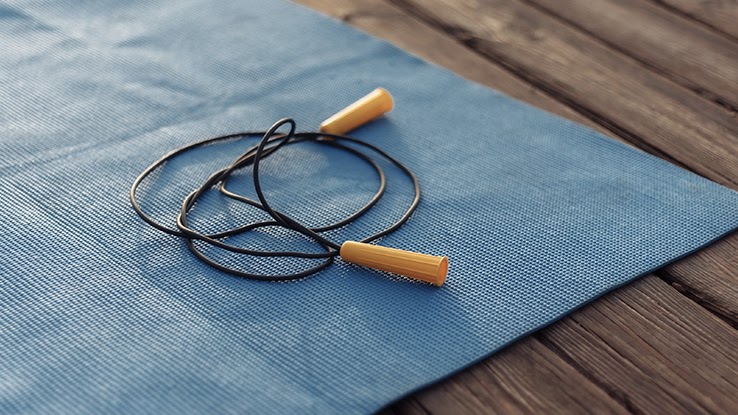
If you think jumping rope is just for kids, think again. It’s a great cardio workout — and all you need is a simple rope and enough space to swing it comfortably. We’ve rounded up everything you need to know to start a jump rope workout routine, from the health benefits to shopping tips. Think of this as your go-to guide to jump rope for beginners.
What Are the Health Benefits of Jumping Rope?
Jumping rope is a great way to get your heart rate up. After just a couple minutes, you may be out of breath and really feeling the exertion. Experts recommend that everyone get at least 150 minutes a week of moderate aerobic activity to protect their health. But if you do a more intense cardio activity, like a jump rope workout routine, you could cut that recommended time in half.
Jumping rope works your arm, leg and core muscles. It’s also great for your coordination. And because it’s a high-impact weight-bearing activity, jumping rope can also help improve your bone health. Putting this type of healthy pressure on your bones can help prevent or manage osteoporosis (a condition that makes bones weak and more likely to break).
Jump Ropes Are Super Easy to Store and Use
Another huge pro of jump ropes as workout equipment: They’re very inexpensive and super easy to store or tote. You can use a jump rope almost anywhere — if you want to work out when you’re on the go, you can just toss it in your purse or gym bag and take it with you. And it’s one of the only pieces of exercise equipment that you can take on a plane with ease.
A jump rope is lighter than weights and takes up much less space than other cardio equipment, such as a bike or treadmill. Just find some level ground and make sure you have enough room on all sides to swing the rope without hitting anything.
After you’re done, you can wind up the rope and keep it with your other workout equipment, hang it on a wall hook or just toss it in a drawer till next time. Simple as that!
How to Start Your Jump Rope Workout Routine
If you’re just starting out, don’t try to do too much too fast. Begin with just a few minutes of basic jumping, and build up to more over time. It’ll take you a while to build the stamina and coordination needed for fancy jump rope tricks. But if you keep it up, you’ll be jumping like a pro in no time.
Follow these tips to start your jump rope routine:
- Keep your elbows in at your sides with your forearms out at 90 degrees.
- Try to rotate the rope from your wrists — not from your shoulders.
- Don’t jump higher than you need to. Jump just high enough for the rope to pass under your feet.
- Stay up on your toes while you jump — your heels should barely touch the ground.
- Don’t get discouraged if you trip the first few times — or if you hit yourself with the rope. It’s normal to need some time to get in the swing of things!
You can also incorporate a briefer jump rope routine at the start of a strength training workout, workout video, bike ride or any other physical activity. It makes a great warmup to get your heart and muscles going. Jumping rope also makes a good addition to an interval training or circuit workout.
For some visual guidance, check out this free five-minute jump rope workout for beginners from Sunny Health and Fitness.
What to Look for When Buying a Jump Rope

When buying a jump rope, pay attention to the length. You want to make sure you have a long enough rope so that you can jump comfortably — but a too-long rope can cause tripping.
The ideal rope length is about three feet longer than your height. When you stand on the middle of the rope, the handles should come about up to your armpits. There are also jump ropes with adjustable lengths. To find the best fit, try out a couple ropes at a sporting goods store.
When you’re choosing your first jump rope, go for a basic rope. Weighted jump ropes can give you an extra tough workout, but they’re better for more experienced jumpers. Jump ropes range from a few dollars up to a hundred dollars, so there’s one for every budget, style preference and price point. Find what works for you!





